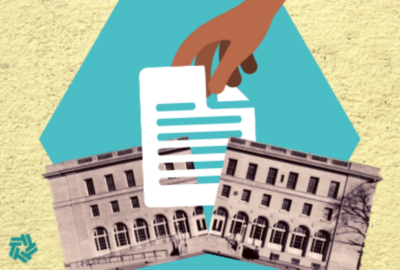Federal employee satisfaction linked to higher agency performance
A Partnership for Public Service study finds agencies with higher employee engagement scores also saw higher internal customer service satisfaction scores.
Agencies with higher employee satisfaction scores are also getting top marks on their performance.
Research from the Partnership for Public Service finds agencies that received the highest internal customer experience scores also ranked high on the Federal Employee Viewpoint Survey.
Brandon Lardy, the Partnership’s senior manager for data science and Strategy, said the study is part of its ongoing work to produce customer experience metrics on par with FEVS data or its Best Places to Work in the Federal Government rankings.
“We don’t have a robust sort of governmentwide data set in the CX space, like we do with the FEVS in the employee experience space,” Lardy said.
“We wanted to create something similar to that in the CX space, but we found is that the data was pretty limited,” he added.
The Office of Management and Budget, Lardy said, “has done a really good job of helping agencies consolidate and standardize the CX metrics that they’re collecting, but there’s still a lot of work to be done.”
To quantify CX performance, the Partnership pulled data from the customer service satisfaction survey that OMB and the General Services Administration conduct annually.
The survey asks federal employees to rate their satisfaction with mission-support functions — including IT, human resources, financial management and acquisition.
The Partnership study found that agencies with higher employee satisfaction scores also saw higher internal customer service satisfaction scores.
“As employees are receiving these services, that obviously has an impact on their ability to then deliver good services to the public,” Lardy said.
GSA and the Office of Personnel Management, both agencies that provide mission-support services to the rest of the federal government, received higher internal customer experience scores than all other agencies.
GSA and OPM also saw the highest scores for employee engagement, effective leadership and employee input.
“The continued focus on employee engagement is paying dividends,” Lardy said. “We’ve seen, over the last decade or so, agency leaders really start to invest more in improving employee engagement, and taking the necessary steps to ensure that they have satisfied and committed employees within their ranks.”
Link between employee and customer experience
In addition to the Partnership’s analysis, agencies are also drawing their own correlations between employee and customer experience.
This year’s Federal Employee Viewpoint Survey (FEVS), published by OPM last week, showed a record 73% on its employee engagement index, which measures how federal employees feel about agency leadership, supervisors and their overall experience on the job.
OPM Acting Director Rob Shriver linked improved FEVS results over the past several years to its efforts to improve pay regulations, clarify federal job protections and develop the federal workforce.
A Department of Veterans Affairs study last year also found higher employee satisfaction scores generally to veterans giving better ratings of the health care they received from VA facilities.
The Partnership’s study generally found employees who report higher trust in their leadership tend to also report higher internal customer satisfaction scores.
“These functions are sort of critical to the work of every federal organization and agency you can think of,” Lardy said. “If your HR function isn’t able to get job postings out on time, or isn’t able to recruit talent effectively, or isn’t able to onboard folks effectively, that can have a huge impact on the experience of new employees, but also employees who are already within the organization.”
The Partnership’s study found federal employees who gave positive scores to their agency’s internal communication also gave high customer and employee experience scores.
“Those agencies that had a culture of communication where their employees felt like they were receiving good information from their managers and their leaders, and there was good communication across the organization, that they also tended to see higher CX scores,” Lardy said.
Large agencies, including the Justice Department and the Social Security Administration, ranked at the bottom of the Partnership’s scorecard.
“Those places, you tend to see more difficulty with things like communication and employee input can be harder to have employees feel empowered in an environment where they are one of a legion of folks working on a particular topic or mission area,” Lardy said.
Lardy said large agencies tend to compartmentalize, making it harder for leaders to communicate across the entire organization.
“It’s hard to have a culture of communication span an entire organization of that size,” he said.
“It’s really important to approach that work in an intentional way, to help build that culture of communication and help them ultimately produce an environment that is better suited to deliver outcomes for the public,” he added.
To improve those leadership and communication scores, Lardy said agency executives should keep employees in the loop on how their work contributes to the larger mission.
“They’re really focused on fixing things and making changes, but they don’t take that final, necessary step of communicating back to employees about what they’ve done and really showing, ‘Hey, here’s how your feedback was meaningful to us.’”
Copyright © 2024 Federal News Network. All rights reserved. This website is not intended for users located within the European Economic Area.
Jory Heckman is a reporter at Federal News Network covering U.S. Postal Service, IRS, big data and technology issues.
Follow @jheckmanWFED






